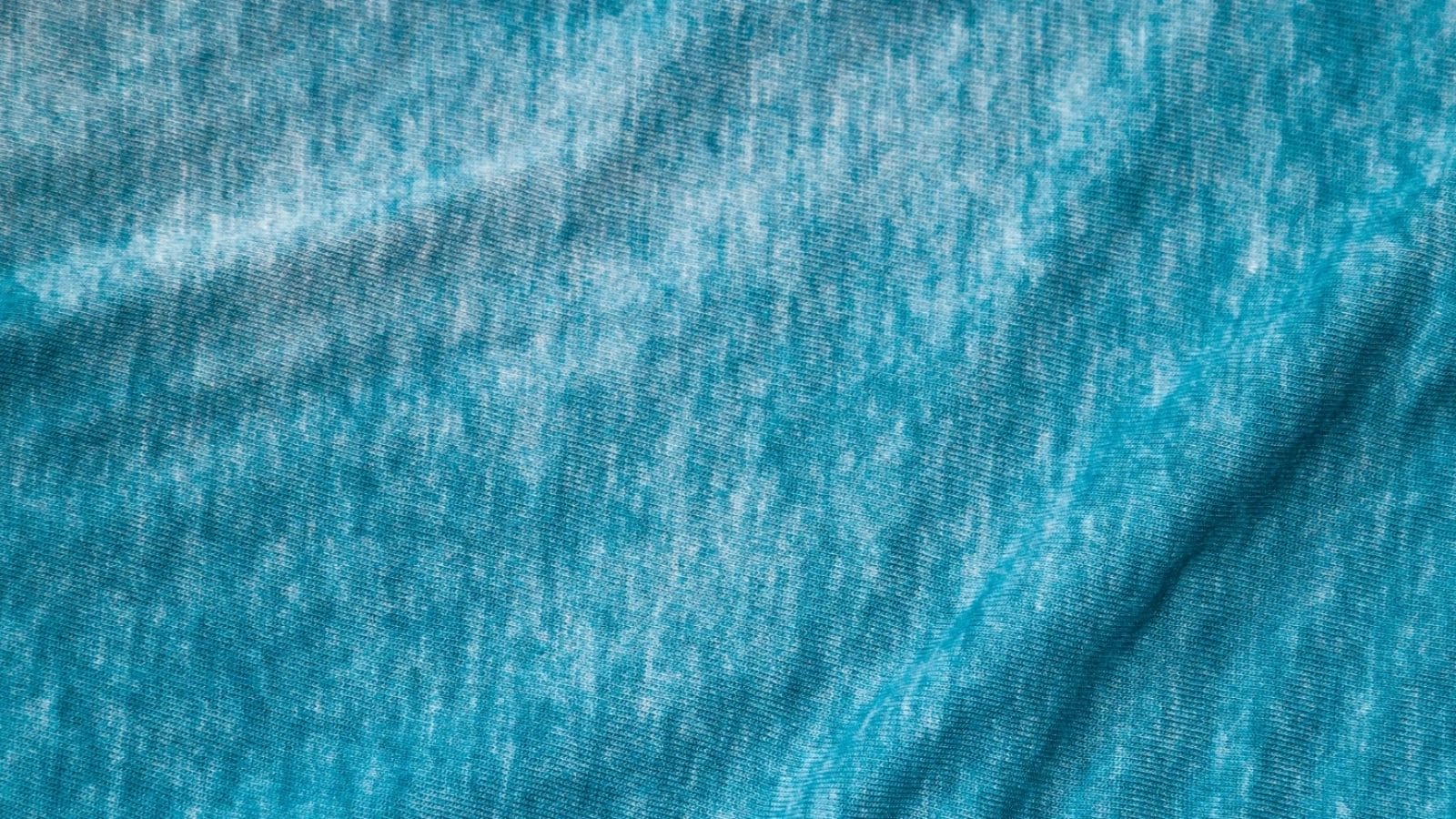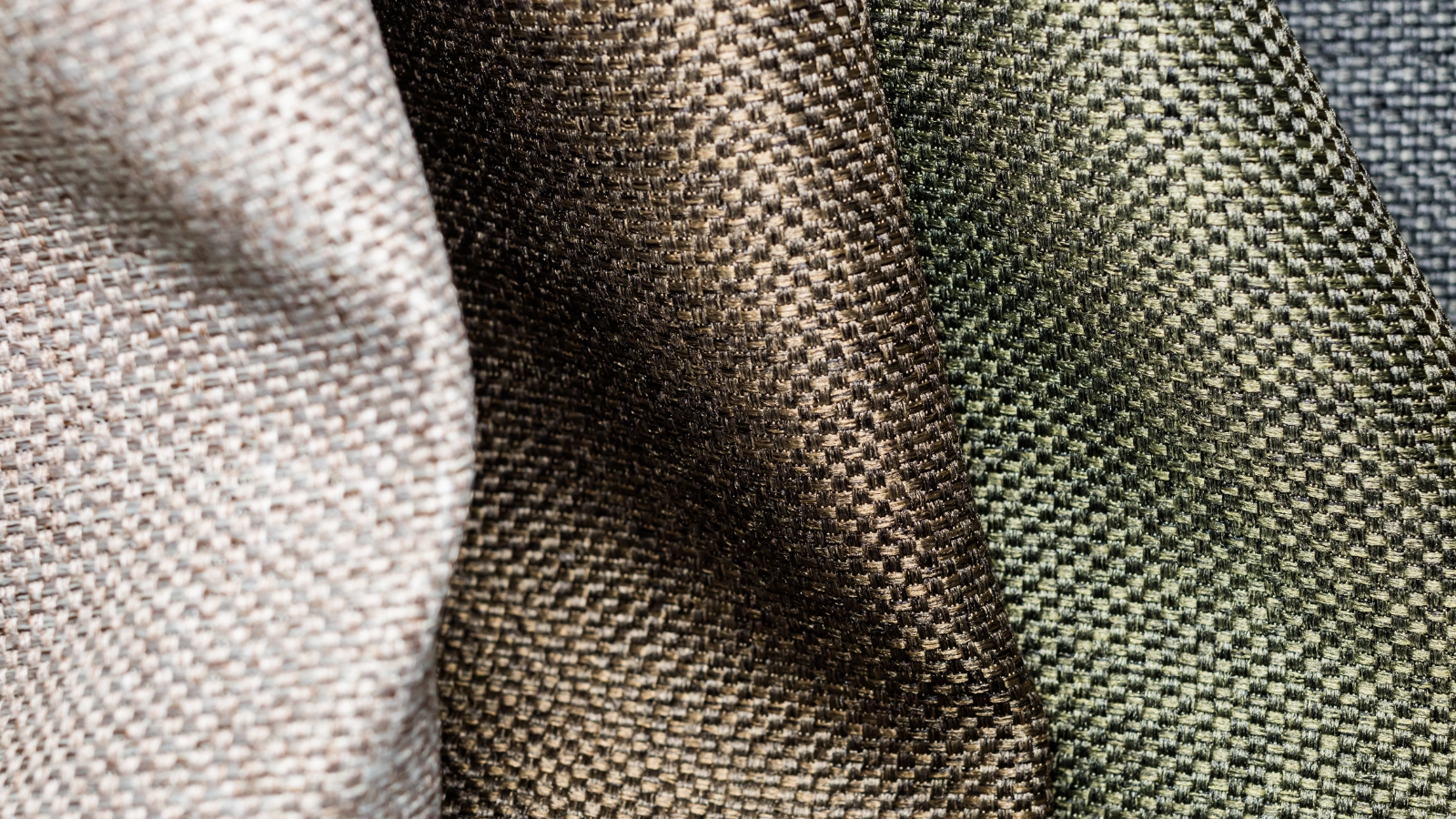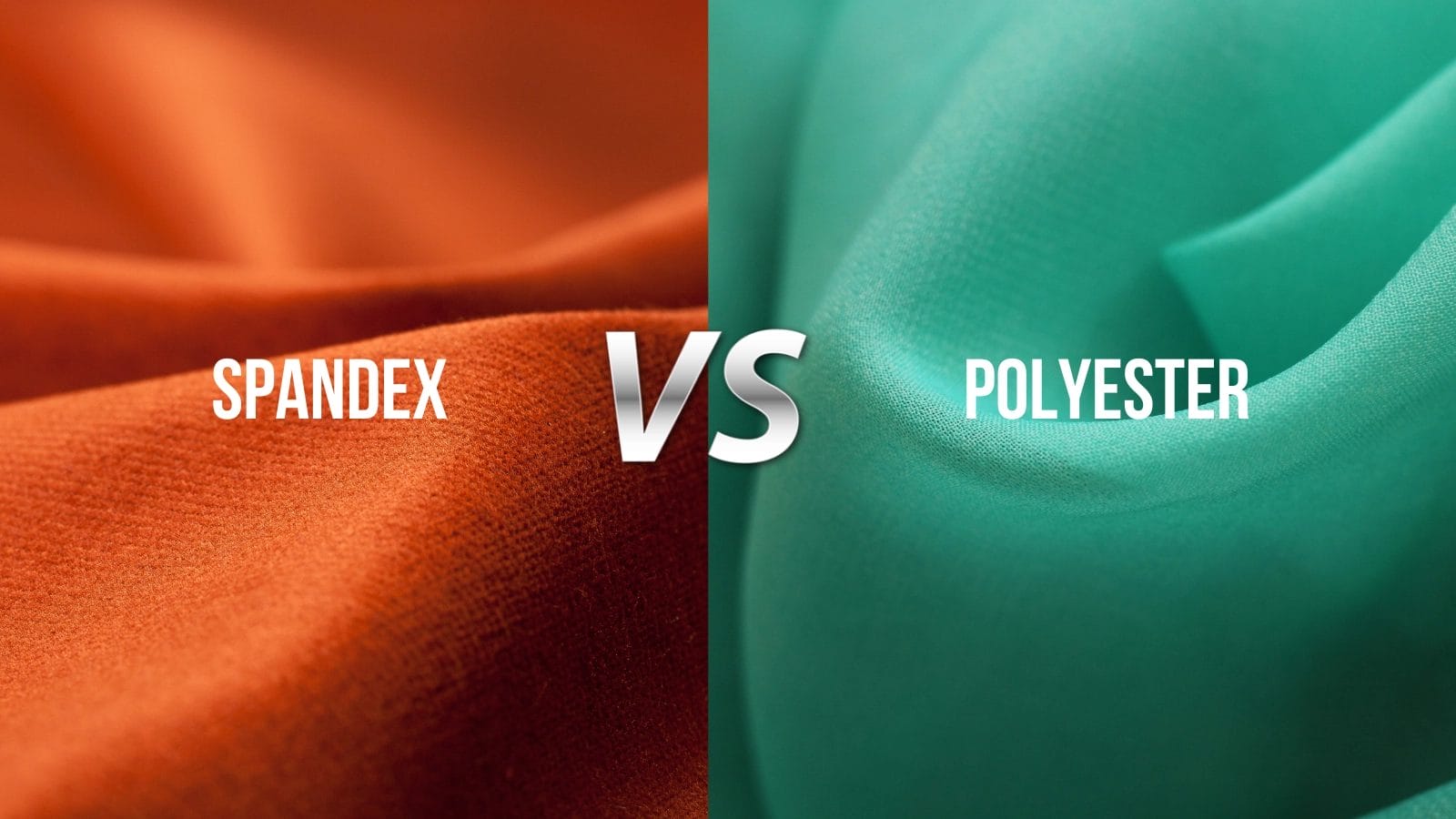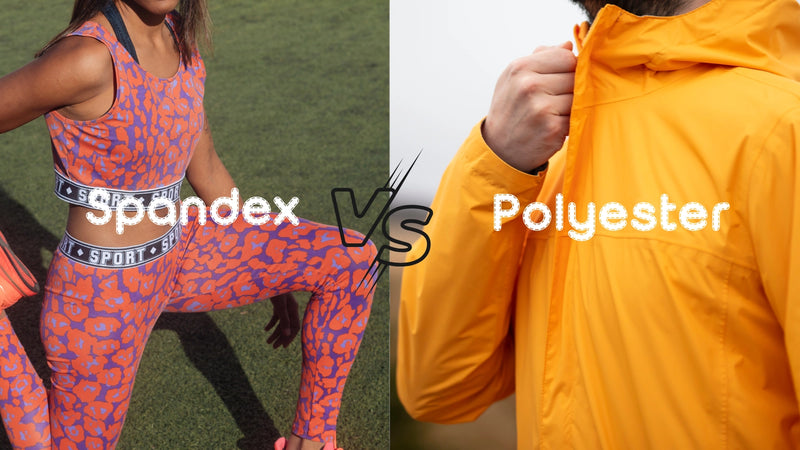When shopping for clothes or athletic wear, you'll often find two popular synthetic fabrics: spandex and polyester. Both materials play important roles in modern clothing. But they have unique characteristics that make them suitable for different uses.
Understanding the key differences between these fabrics will help you make smarter choices for your wardrobe needs. Let's compare these versatile materials in terms of performance, comfort, and practical uses.
Key Takeaways
- Spandex can stretch up to 500% of its size. But polyester has minimal stretch.
- Polyester is more durable and cost-effective. But spandex is primarily used as a blend to add elasticity to garments.
- Both materials are derived from petroleum. But spandex breaks down faster, releasing more microplastics into the environment.
- Spandex excels in form-fitting athletic wear and compression garments. Polyester is versatile for everyday clothing and home fabrics.
- Both fabrics need cool water washing. But spandex needs gentler care to maintain its stretchy properties.
What Is Spandex Fabric?

Understanding Spandex is crucial before you look at how it stacks up against polyester.
Historical and Origins of Spandex
In the late 1950s, a synthetic fiber called spandex became a groundbreaking alternative to rubber in the textile industry.
This innovative material was derived from long-chain polymer polyurethane. It quickly transformed clothing manufacturing with its superior elasticity and comfort.
Throughout the 1960s and 1970s, spandex gained significant popularity in fashion. It became essential for form-fitting garments.
The material can stretch up to five times its original length while keeping its shape. This makes it especially useful for athletic wear and swimsuits.
Fabric Composition of Spandex
Manufacturers create spandex fibers using long-chain polymer polyurethane as the main material.
You'll find that spandex fibers are fundamentally different from polyester fabric. Because they're specifically engineered for maximum elasticity and recovery.
The material's unique composition allows it to stretch up to 100% beyond its original length. Meanwhile, it can maintain its ability to return to its initial shape.
Common Uses of Spandex
Three main uses highlight the versatility of this stretchy fabric in modern clothing and accessories.
Spandex is extensively used in activewear. It's often blended with polyester to create comfortable, snug garments. These garments support movement during exercise and sports activities.
The second primary application is in swimwear. Spandex's stretchy properties allow for a snug fit while maintaining shape in water.
Finally, you'll see spandex in shapewear and compression garments. It provides support and contouring effects.
Care and Maintenance of Spandex
Proper care and maintenance of spandex garments will extend their lifespan.
Wash your spandex items in cool water with mild detergents. This will prevent fiber breakdown and maintain elasticity.
Unlike polyester, spandex requires special attention to heat exposure during washing and drying. You should avoid high temperatures, which can damage the elastic fibers.
During storage, keep your spandex garments away from direct sunlight and harsh chemicals.
Regularly check for pilling on your spandex clothing. Use proper storage methods to keep it in good condition and keep its shape and stretch.
Advantages and Disadvantages of Spandex
1. Benefits of Spandex Fabric:
- Flexibility: Highly elastic, allowing for a wide range of motion.
- Comfort: Soft texture that feels good against the skin.
- Durability: Resistant to wear and tear, maintaining its shape over time.
- Moisture-Wicking: Helps to pull moisture away from the skin, keeping the wearer dry.
- Lightweight: Easy to wear without adding bulk.
- Shape Retention: Stretches and returns to its original shape, preventing sagging.
- Versatile: Suitable for various applications, including activewear, swimwear, and everyday clothing.
2. Drawbacks of Spandex Fabric:
- Heat Sensitivity: Can be damaged by high temperatures, such as in washing or drying.
- Limited Breathability: May not allow for adequate air circulation, leading to discomfort in hot conditions.
- Cost: Generally more expensive than some other fabrics.
- Care Requirements: May need special washing instructions to maintain quality.
Environmental Impact of Spandex
Spandex is made from petroleum-based polyurethane. Its production involves toxic chemicals that can harm ecosystems. The material's manufacturing process generates greenhouse gases, contributing to climate change.
While both fabrics are synthetic, spandex presents extra environmental challenges. It breaks down faster than polyester, releasing microplastics during washing.
Spandex has limited recycling options. This makes it less sustainable since it often ends up in landfills after use.
What Is Polyester Fabric?

With a clear understanding of Spandex, it’s important to consider polyester and its unique attributes.
Historical and Origins of Polyester
Since it was created in the 1940s by British scientists, polyester has changed the textile industry with its special qualities.
Polyester became popular in the 1950s when manufacturers recognized its durability and versatility as a synthetic fabric.
Made from petroleum products, polyester quickly gained use in fashion and industry.
Its arrival marked a big change from natural fibers. This versatile fabric offers strength, color retention, and easy care, which were not features of fabrics before.
Fabric Composition of Polyester
The molecular structure of PET is the basis of what you know as polyester fabric in your everyday clothing.
Manufacturers mix ethylene glycol with terephthalic acid. This creates long polymer chains that give the fabric its unique properties.
This synthetic fabric's composition results in remarkable durability and wrinkle resistance. It maintains its shape well and keeps colors vibrant even after multiple washes.
The fabric effectively wicks moisture away from your skin. But you'll notice it's less breathable than natural materials.
Common Uses of Polyester
Today's versatile clothing and home furnishings often incorporate PET fibers. You'll commonly find it in athletic wear, outdoor gear, and household textiles.
When looking for activewear, polyester, and spandex blends are common in sportswear. This is due to their moisture-wicking properties and strength.
You'll find this fabric in curtains, upholstery, and outdoor equipment. Because it resists fading and maintains its shape.
Polyester-spandex blends are used in athletic applications. You'll find them in compression wear, swimsuits, and performance clothing.
Care and Maintenance of Polyester
Understanding polyester's unique composition helps explain its care requirements. You'll find polyester easy to manage with minimal effort.
Always wash your polyester garments in cold water. This will preserve their shape and color vibrancy. Avoid using bleach, as it can damage the fabric's structure.
Polyester resists wrinkles and shrinking. But you should manage static and pilling with proper washing techniques. Regular care includes using appropriate detergents and following garment care labels.
Advantages and Disadvantages of Polyester
1. Advantages of Polyester:
- Durability: Resistant to stretching, shrinking, and wrinkling.
- Quick-Drying: Dries faster than natural fibers, making it ideal for activewear.
- Stain Resistance: Less likely to absorb stains compared to other fabrics.
- Color Retention: Holds dyes well, ensuring vibrant colors that last over time.
- Low Maintenance: Easy to wash and care for; does not need special treatments.
- Lightweight: Comfortable for wear in various climates.
- Affordability: Generally less expensive than natural fabrics.
2. Disadvantages of Polyester:
- Breathability: Less breathable than natural fibers, leading to discomfort in hot weather.
- Static Electricity: Tends to generate static, which can be annoying.
- Heat Sensitivity: Can melt or become damaged at high temperatures.
- Odor Retention: May keep odors more than natural fibers after sweating.
- Comfort: Some people find polyester less comfortable against the skin compared to cotton or wool.
Environmental Impact of Polyester
You might encounter polyester in many everyday products. But this fabric carries significant environmental consequences throughout its lifecycle.
Polyester is a synthetic material that contributes heavily to greenhouse gas emissions. It produces approximately 1.2 billion tons of carbon dioxide equivalent yearly.
When you wash polyester garments, their hydrophobic fibers release microplastics into water systems. This will harm aquatic ecosystems.
This fabric isn't biodegradable. It creates lasting environmental concerns through pollution and waste accumulation.
Spandex vs Polyester: Key Similarities and Differences

Spandex and polyester share common uses in athletic wear and swimwear. But their properties differ markedly in some key areas.
Key Similarities Between Spandex and Polyester
Spandex and polyester have several key characteristics. These make them popular choices for performance clothing.
- Both materials are exceptionally durable and resistant to everyday wear and tear.
- They're both lightweight synthetic fabrics. They won't shrink or wrinkle easily, making them practical for regular use and travel.
- When it comes to maintenance, you can wash both spandex and polyester with minimal fuss. They can keep their shape and quality through multiple cleaning cycles.
- Additionally, these fabrics excel in performance wear applications. They offer reliable moisture management and quick-drying properties.
Key Differences Between Polyester and Spandex
Spandex and polyester showcase distinct characteristics that set them apart in significant ways. Here’s a comparison table highlighting their key differences:
| Feature | Polyester | Spandex |
|---|---|---|
| Composition | Synthetic material made from polyethylene terephthalate (PET) | Synthetic fiber made from polyurethane |
| Elasticity | Low elasticity, mainly retains shape | High elasticity, stretches significantly |
| Durability | Highly durable, resistant to shrinking and stretching | Durable but can be sensitive to heat |
| Moisture Wicking | Moderate; can absorb some moisture | Excellent moisture-wicking properties |
| Comfort | Generally comfortable, can be rougher | Very comfortable, soft feel against the skin |
| Breathability | Moderate breathability | Good breathability |
| Common Uses | Clothing, home textiles, sportswear | Activewear, swimwear, form-fitting clothing |
| Care Instructions | Machine washable, wrinkle-resistant | Machine washable, may require special care |
How to Choose Between Spandex and Polyester

When choosing between spandex and polyester, consider several key factors that affect their performance.
- Consider your activity level and breathability requirements. Spandex offers superior moisture-wicking for intense workouts.
- If durability is your priority, polyester is fade-resistant for long-term use.
- Consider your budget since polyester is typically more cost-effective than spandex.
- Think about maintenance requirements, too. Polyester needs less care and maintains its shape better.
- For activities that need stretch and flexibility, spandex's great elasticity makes it the better choice.
Conclusion
When choosing between spandex and polyester, you'll need to consider your specific needs. Spandex is your best option if you want high elasticity and snug clothing. If you want durability and moisture-wicking properties, polyester will serve you better.
You can also opt for polyester spandex fabric. It blends both materials to get the benefits of stretch and durability in one garment.
Learn more fabric knowledge on the Longan Craft Blog, and dive into the fabric world with Longan Craft!
FAQs
Which Is Better, Spandex or Polyester?
You'll find neither is universally "better." Your choice depends on your needs. Pick spandex for superior stretch and comfort. Or select polyester for better durability and cost-effectiveness. They're often blended for ideal performance.
Is Polyester and Spandex Good for Skin?
While you'll find both materials functional, they aren't ideal for skin health. You might experience irritation, allergic reactions, or discomfort due to poor breathability. It's best to monitor your skin's response when wearing them.
Is Polyester or Spandex Warmer?
Polyester's thicker fibers will keep you warmer than spandex. It retains more heat and insulates better, especially when it's cold. Spandex isn't designed primarily for warmth but for stretch.
How Does Nylon Compare to Polyester?
Nylon is generally stronger and more resilient than polyester. But it can absorb more moisture. It's often used in activewear and outdoor gear.
Are Elastane, Lycra, and Spandex the Same?
Elastane, Lycra, and spandex are often used interchangeably. But they all refer to the same synthetic fiber known for its excellent elasticity.


0 comments